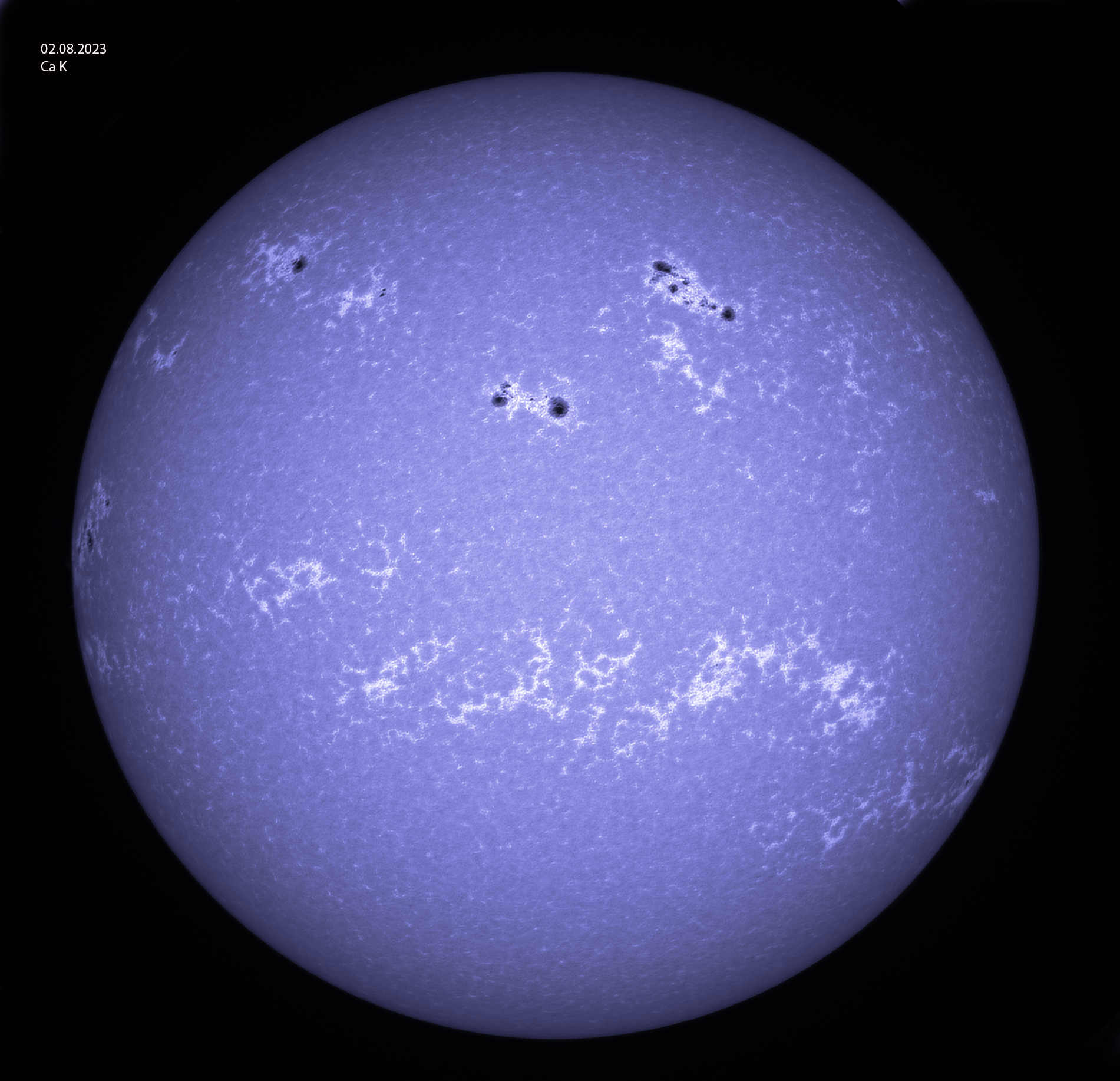EarthSky Community Photos
Submit your photo here. Comment or upvote on photo pages. Search via photographers' names. More improvements coming! To help, please donate.

Eureka, CA USA
02:50 pm
Williams Optic 80mm refractor telescope, Celestron Evolution alt-az mount, Lunt B1800 Calcium K module, ZWO ASI294 monochrome camera
One thousand frames were stacked in Autostakkert and sharpened in IMPPG. Final tone adjustment and false coloration was done in Photoshop.
Image of the Sun on February 8, 2023 through Calcium K. The Calcium K module picks up light in the near UV (394 nm) and we are seeing the lower chromosphere which is cooler than the upper chromosphere seen in hydrogen-alpha. The image shows the large three active areas containing sunspots (Left to Right, AR 3216, AR3214, AR3213). Also shown is the granulation the sun and the distribution of faculae. Faculae which are areas of concentrated magnetic energy that that form a weblike network between granules. During the solar maximum, faculae become plentiful and account for the small increase (0.1%) in brightness of sun at maximum. Faculae can also be seen on the photosphere (using a white light solar filter) where these are most evident at the limb which is darker compared to the brighter central regions of the sun.








